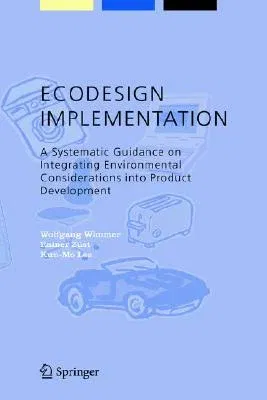Wolfgang Wimmer
(Author)ECODESIGN Implementation: A Systematic Guidance on Integrating Environmental Considerations Into Product Development (2004)Hardcover - 2004, 20 October 2004

Qty
1
Turbo
Ships in 2 - 3 days
In Stock
Free Delivery
Cash on Delivery
15 Days
Free Returns
Secure Checkout

Part of Series
Alliance for Global Sustainability Bookseries
Part of Series
Alliance for Global Sustainability (Hardcover)
Print Length
140 pages
Language
English
Publisher
Springer
Date Published
20 Oct 2004
ISBN-10
1402030703
ISBN-13
9781402030703
Description
Product Details
Book Edition:
2004
Book Format:
Hardcover
Country of Origin:
NL
Date Published:
20 October 2004
Dimensions:
23.39 x
15.6 x
1.12 cm
ISBN-10:
1402030703
ISBN-13:
9781402030703
Language:
English
Location:
Dordrecht
Pages:
140
Publisher:
Weight:
403.7 gm